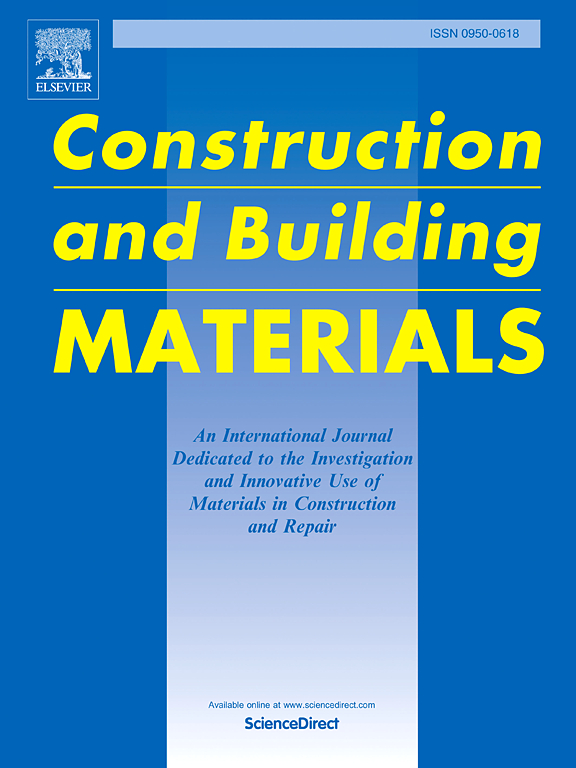Effect of hydrophobic nanoparticle size on corrosion resistance of superhydrophobic mortar
IF 7.4
1区 工程技术
Q1 CONSTRUCTION & BUILDING TECHNOLOGY
引用次数: 0
Abstract
The deterioration of cement-based materials is frequently associated with water infiltration. This work introduces hydrophobic nanoparticles (NPs) synthesized from silicon dioxide with varying particle sizes, which significantly enhance the water repellency when incorporated into mortar. The results indicate a clear negative correlation between the water contact angle (WCA) of the mortar and the size of the hydrophobic NPs; when 20 nm hydrophobic NPs are incorporated, the WCA can reach 153.16 °, exhibiting three-dimensional superhydrophobicity. Furthermore, the water absorption rate of the superhydrophobic mortar after 120 hours immersion is only 42.16 % of that of ordinary mortar. In electrochemical corrosion experiments, the corrosion current density of the superhydrophobic mortar is two orders of magnitude lower than that of ordinary mortar, effectively preventing corrosive liquids from penetrating the steel reinforcement within the concrete. This work provides a solid scientific and theoretical foundation for the widespread application of superhydrophobic cement-based materials in harsh, high-humidity, and corrosive environments.
求助全文
约1分钟内获得全文
求助全文
来源期刊

Construction and Building Materials
工程技术-材料科学:综合
CiteScore
13.80
自引率
21.60%
发文量
3632
审稿时长
82 days
期刊介绍:
Construction and Building Materials offers an international platform for sharing innovative and original research and development in the realm of construction and building materials, along with their practical applications in new projects and repair practices. The journal publishes a diverse array of pioneering research and application papers, detailing laboratory investigations and, to a limited extent, numerical analyses or reports on full-scale projects. Multi-part papers are discouraged.
Additionally, Construction and Building Materials features comprehensive case studies and insightful review articles that contribute to new insights in the field. Our focus is on papers related to construction materials, excluding those on structural engineering, geotechnics, and unbound highway layers. Covered materials and technologies encompass cement, concrete reinforcement, bricks and mortars, additives, corrosion technology, ceramics, timber, steel, polymers, glass fibers, recycled materials, bamboo, rammed earth, non-conventional building materials, bituminous materials, and applications in railway materials.
 求助内容:
求助内容: 应助结果提醒方式:
应助结果提醒方式:


